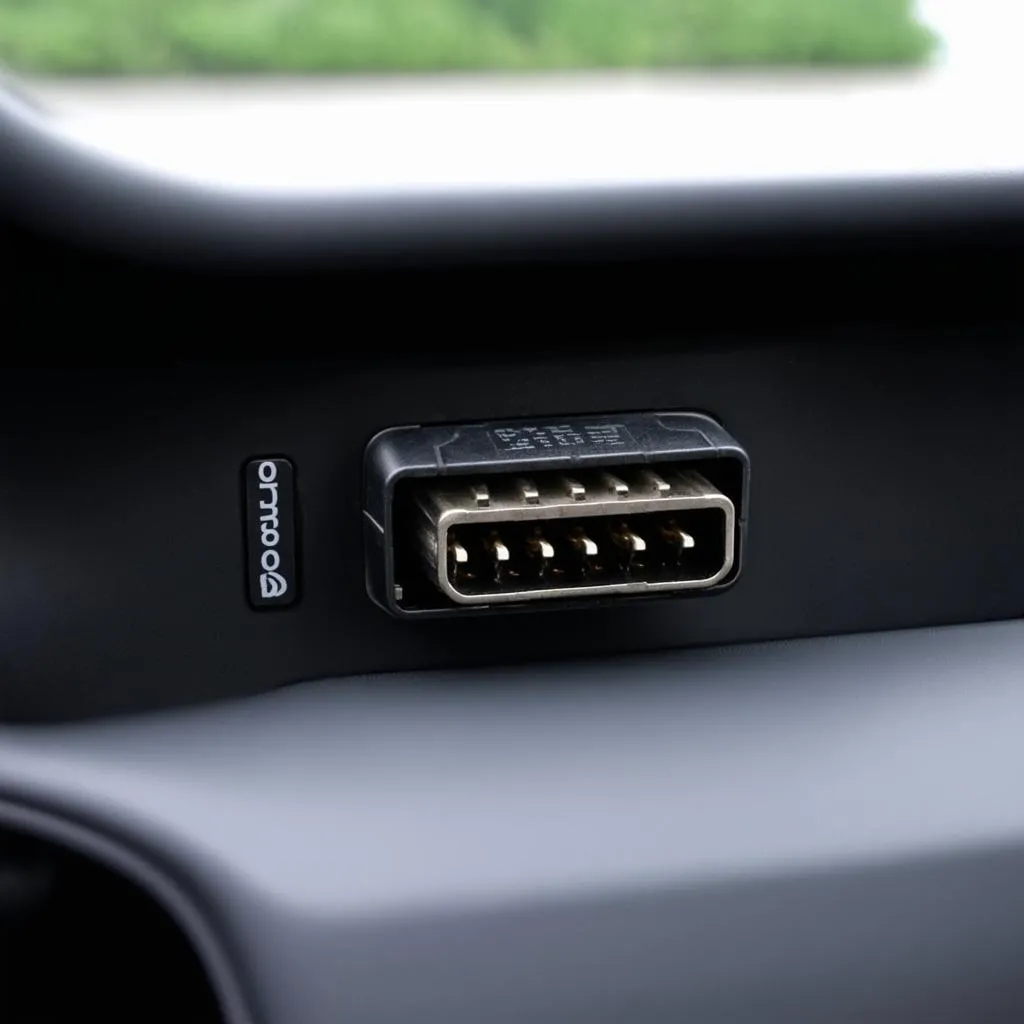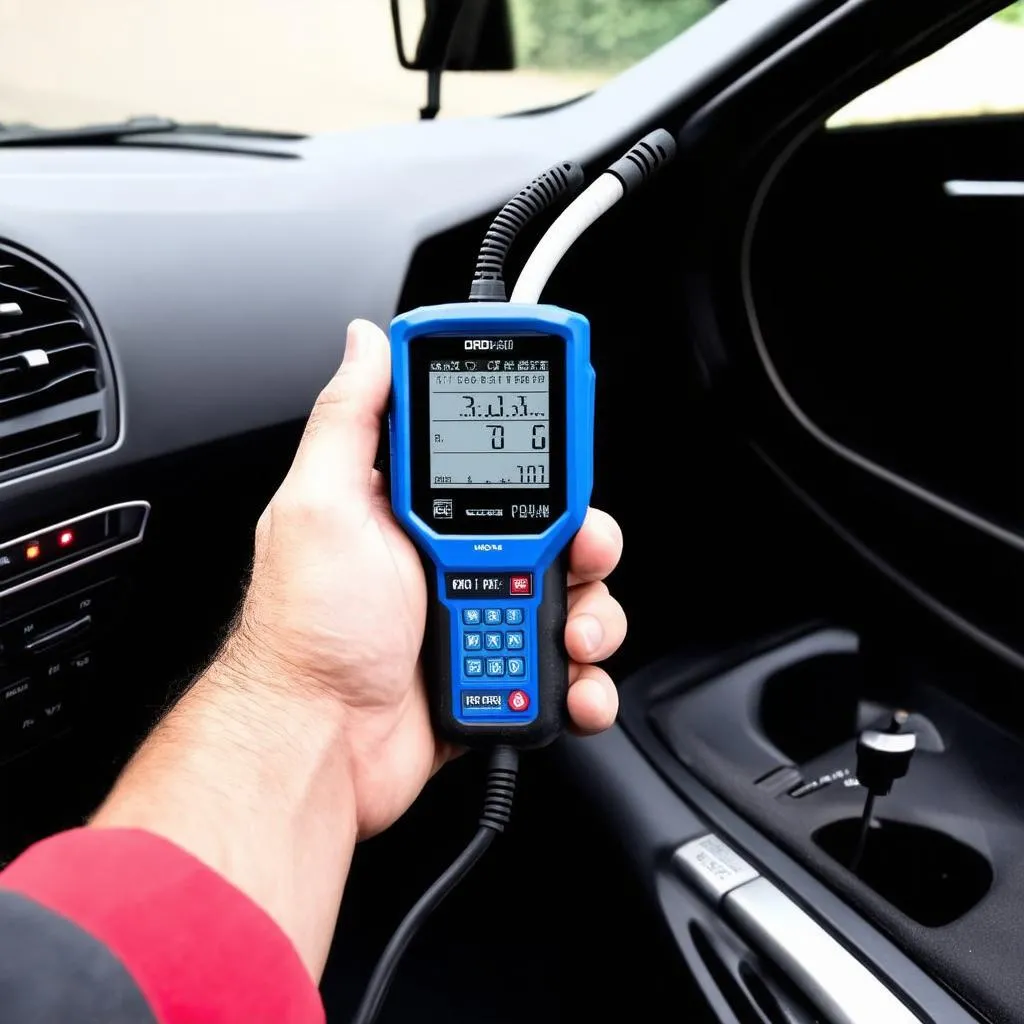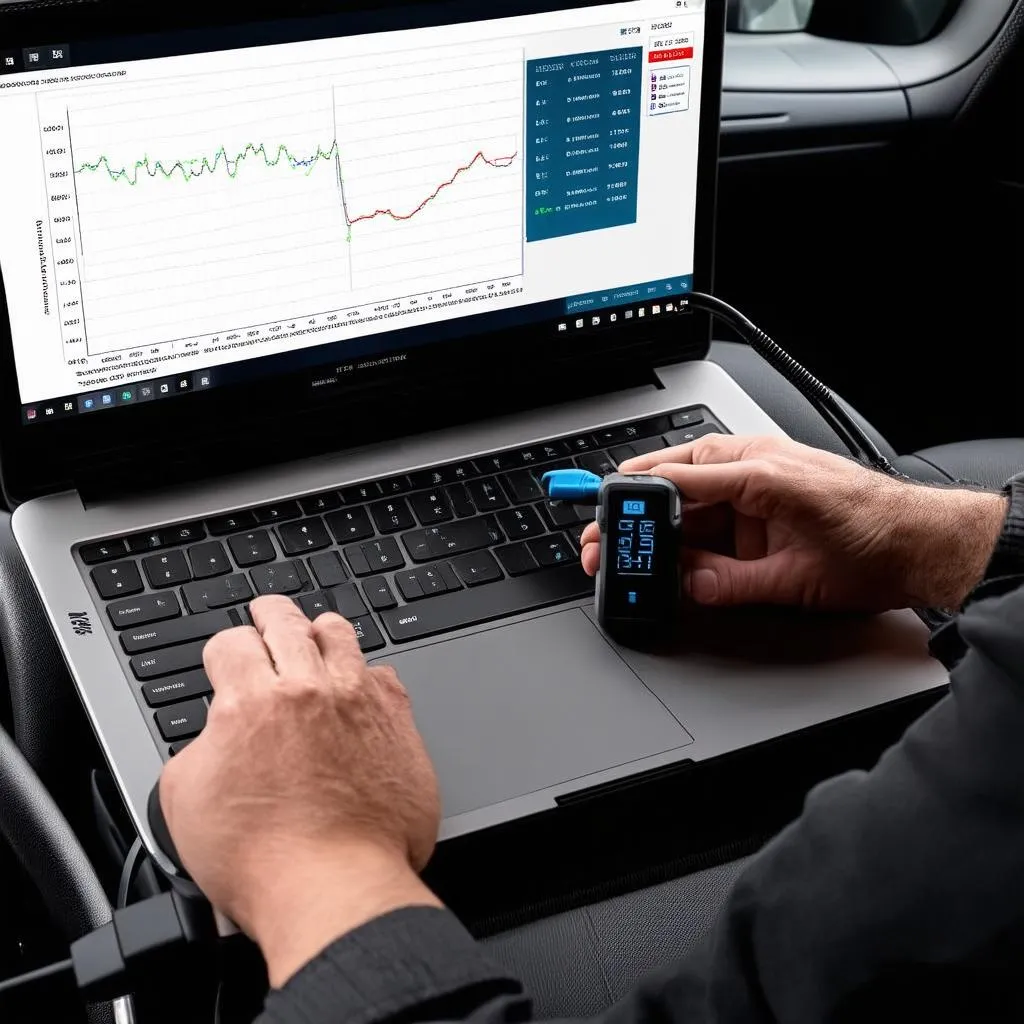Have you ever wondered where to plug that mysterious OBD scanner you just bought? You’re not alone. Many car owners find themselves scratching their heads when trying to figure out where to connect the device. It’s like trying to solve a riddle without the answer!
Understanding the OBD Port: Your Car’s Diagnostic Hub
The OBD (On-Board Diagnostics) port is a gateway to your car’s internal systems, offering a wealth of information about its health and performance. Think of it as your car’s personal diary, recording every little detail of its journey. It’s essentially a window into your car’s digital soul.
What Does It Do?
The OBD port lets you communicate with your car’s computer, using a device like an OBD scanner. This communication enables you to:
- Diagnose potential issues: The OBD port can detect and identify any problems with your car’s engine, transmission, brakes, and other crucial systems. This can help you catch issues early, saving you time, money, and stress.
- Monitor your car’s performance: With an OBD scanner, you can see your car’s real-time data, including speed, engine temperature, fuel consumption, and more. This information can help you improve your driving habits and maximize fuel efficiency.
- Reset fault codes: When your car throws a “check engine” light, an OBD scanner can help you decipher the error code and even reset it, often saving you a trip to the mechanic.
Why You Should Care
Whether you’re a seasoned mechanic or a new car owner, understanding the OBD port is crucial. It’s like having a secret weapon in your car-care arsenal! It empowers you to:
- Take control of your car’s maintenance: Knowing where to plug in an OBD scanner gives you the ability to diagnose issues before they become serious, saving you money and potentially preventing costly repairs.
- Become a more informed driver: The data you can access through the OBD port can help you understand your car’s performance better and make informed decisions about your driving habits and maintenance.
- Save money on repairs: By identifying issues early and resetting fault codes yourself, you can often avoid expensive trips to the mechanic.
Finding the OBD Port: A Journey of Discovery
Now, let’s get to the heart of the matter: where exactly is this magical OBD port located?
It’s typically found underneath the dashboard, near the steering column. The port is usually a 16-pin rectangular connector that looks similar to a standard phone jack.
Here’s a step-by-step guide to help you find it:
- Consult Your Owner’s Manual: The most reliable source of information is always your car’s owner’s manual. It will specifically tell you where the OBD port is located in your vehicle.
- Look for a Label: If you’re having trouble finding it, look for a label or sticker that might say “OBD,” “OBD2,” or “Diagnostic Connector” near the steering column.
- Look for a Rectangular Port: Once you find the general area, look for a rectangular port with 16 pins.
Remember: The exact location of the OBD port can vary depending on the year, make, and model of your car.
Troubleshooting OBD Port Issues
Sometimes, you might encounter difficulties connecting your OBD scanner. Here are some common issues and solutions:
- Incorrect OBD Port: Double-check the location and ensure you’re plugging the scanner into the correct port.
- Loose Connection: Ensure that the OBD scanner is securely plugged into the port. Try wiggling it gently to make sure it’s making good contact.
- Car Battery Issues: A weak car battery can sometimes prevent the OBD port from working correctly. Make sure your car battery is charged.
- Damaged Port: If the OBD port itself is damaged, you’ll need to have it repaired.
Pro Tip: If you’re unsure about any of these solutions, it’s always a good idea to consult a professional mechanic for assistance.
Frequently Asked Questions
1. Can I drive with the OBD scanner plugged in?
Yes, it’s generally safe to drive with an OBD scanner plugged in. However, it’s recommended to avoid driving with the scanner plugged in for extended periods, as it could potentially interfere with some electrical systems.
2. What does the OBD code “P0171” mean?
“P0171” is a common error code that indicates a problem with the fuel system, specifically a “system too lean” condition. It could be caused by a variety of factors, such as a faulty fuel injector, a clogged air filter, or a leak in the intake manifold.
3. What are the best OBD scanners for European cars?
There are many great OBD scanners available for European cars. Some popular options include:
- Foxwell NT530: A powerful and versatile scanner with advanced diagnostics capabilities.
- Autel MaxiCOM MK808: A professional-grade scanner with advanced features and comprehensive coverage.
- Launch X431 Pro: A comprehensive diagnostic tool for various car makes and models.
4. Can I use a cheap OBD scanner?
Yes, you can use a cheaper OBD scanner for basic tasks like reading and clearing fault codes. However, for more advanced diagnostics, a more expensive and feature-rich scanner might be necessary.
5. Are there any other OBD port-related articles on techcarusa.com?
Yes, we have several articles on our website that dive deeper into specific aspects of the OBD port and OBD scanners. You can find them by visiting:
- https://techcarusa.com/where-to-plug-in-obd-scanner/
- https://techcarusa.com/2019-dodge-obd-how-to-plug-scanner/
- https://techcarusa.com/can-you-drive-car-with-obd-scanner-attached/
- https://techcarusa.com/2001-ford-f53-motorhome-obd-port/
- https://techcarusa.com/best-obd-scanner-for-all-cars/
Need help with your OBD scanner or car diagnostics? Contact us on WhatsApp at +84767531508. We have a team of experienced technicians available 24/7 to assist you!
Conclusion:
The OBD port is a vital part of your car, offering a glimpse into its intricate workings. By understanding its purpose and location, you can take control of your car’s maintenance and drive with more confidence.
We encourage you to explore our website for more information about the OBD port and related topics.
Feel free to share your thoughts and experiences in the comments section below. Happy diagnosing!
 obd port location
obd port location
 obd scanner connected
obd scanner connected
 obd scanner guide
obd scanner guide